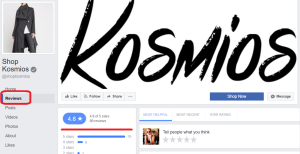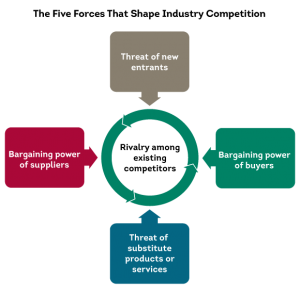
The disruption to the widespread on-premise and self-hosted ecommerce paradigm began in 2010, as the world’s most popular SaaS shopping cart offerings were just getting off the ground.
Since then, modern SaaS platforms have continued to improve overall product sophistication and customer support experience. They’ve become increasingly well funded, more technically adept and capable at hosting impressive, global infrastructures. So, what’s holding back your online store from switching to SaaS over self-hosted?
Below, you’ll find everything you need to know about the differences between the solutions and information on which one might better cater to your business.
What type of organization can benefit from a SaaS commerce platform?
A SaaS ecommerce platform is not going to be the right fit for every organization. One specific example is a large international enterprise that has complex omnichannel feature requirements. By this I mean a retailer who also doubles as a wholesaler or distributor, has multiple warehouses operating in multiple countries and languages, or a retailer that has developed significant (i.e. multi-million dollar) fulfillment automation or ERP integration system dependencies. Such retailers often require extremely complex customizations to their shopping platforms that render most SaaS platforms infeasible to utilize.
Those Looking for Feature Richness
Many SaaS platforms have come a long way in terms of feature richness, customizability and overall scalability. They are an excellent fit for the vast majority of SMBs (businesses with 1-100 employees and less than $ 50 million in annual revenues) who want to setup an online store quickly and professionally. It’s perfect for companies that desire to offload the hosting and management burden of their ecommerce platforms with the minimum amount of upfront expenses and ongoing maintenance costs.
Perhaps surprisingly, the best SaaS commerce platforms also make sense for larger enterprises (with annual revenues ranging anywhere from $ 50 million to $ 1 billion) provided that they have sizable investments in their ecommerce back-office infrastructure. The fit can make sense, provided that the organization espouses the appropriate expectations with respect to what a SaaS commerce platform really should be utilized for and what it should not — at least in terms of utilizing a modern n-tier architecture.
For example, by utilizing a modern product information management (PIM) tool to power multichannel publication needs and manage its product data, a larger organization can connect the rest of its legacy ERP systems (i.e. accounting, CRM, inventory, procurement, distribution and fulfillment software) to a modern SaaS platform without having to sacrifice many features or complex integrations typically reserved for on-premise, self-hosted offerings.
Those Looking for Easy Integration and Automation
This said, a SaaS commerce platform for a $ 50M+ organization should really be used as a thin front end shopping cart only. It should be used as a cost-effective means to a larger scale end, by being a single component in a broader omnichannel solution architecture that’s largely powered through automation, much like an ERP or a PIM.
Since a SaaS commerce platform generally contains an API, it’s products, customer data and order data can be manipulated both inbound and outbound automatically. Doing this allows the organization to develop customizations in other parts of their ERP infrastructure, keeping the shopping cart lean and malleable.
Those Looking for Ecommerce as a Spoke, Not the Hub
One of the objections I often encounter with enterprise clients who are against SaaS commerce platforms is this: the platform, they say, is just too rigid and there is no access to the underlying source code. A host of ERP related features (i.e. customer management, product management and order management capability) is also cited as being a deficiency or non-starter in a SaaS context, by the same group who tend to still favor on-premise and self-hosted platforms.
Those more familiar with self-hosted solutions also note that SaaS management tools are too simplistic for their needs or that they don’t scale well when used by multiple departments trying to hone the platform to control product or order management workflows at a granular level. My rebuttal: if you’re using the SaaS platform in a broader scale context by connecting it to other back-office systems and turning it into a simple shopping cart, the SaaS platform can absolutely offer great utility and economy.
Those Looking for Modern Design & Excellent Customer Experience
An ecommerce store, in my view, should have a refreshed design and updated user interface at least once per year for any sized organization and every quarter for large SMBs or mid-market companies. SaaS shopping cart platform frontend templates are extremely flexible, and if the entire platform is treated as a spoke in a broader ERP back-office project, it can be reimagined, redesigned, flushed of its product and order data and reset fully in a short period of time.
In order to determine whether a SaaS or an on-premise ecommerce platform is a better fit for any given organization, refer to the below comparison of each of their core value propositions.
Benefits of a SaaS Ecommerce Platform
Managed Uptime and Security
A modern SaaS platform is managed by a professional and experienced organization, dedicated to ensuring your online store is always up and performing at top speed. They work hard to ensure a consistent and quality user experience for your customers.
Since no SaaS offering is perfect, there is always the risk of an outage to your store from time to time. While that’s true, the same can be easily said about on-premise solutions. In fact, the larger SaaS ecommerce platforms typically enjoy a 99.99% uptime record that often spans over many years — a figure most on-premise solutions hosted by internal IT departments can rarely compete with.
When it comes to security, ecommerce technology often requires software updates and patches to address new vulnerabilities. With an on-premise solution, the onus to do this is on the merchant –– meaning you must stay up to date with the most recent technology news and needs to make sure you are protected. With a SaaS solution, these updates and patches happen automatically, behind-the-scenes, allowing your to focus on your business rather than the backend.
Denial of Service Mitigation
DDoS attacks can strike without warning and can happen intentionally by hostile outside parties or be triggered by scripts that scour the internet looking for known vulnerabilities. But when you host your online store with a SaaS provider, DDoS mitigation is handled for you, providing better protection than most self-hosted providers can offer.
PCI Compliance Handling
Handling credit card data is a very sensitive subject, and PCI compliance (the process of ensuring your ecommerce platform is securely dealing with credit card information) is handled by your SaaS provider. This is an incredibly expensive and time consuming endeavour that most retailers really shouldn’t try to handle themselves.
Adherence to Best Practices for Overall User Experience
SaaS platforms provide pretty rigid workflows for enforcing a particular checkout experience. While an organization can change the skin (i.e. graphics, colors and layout) of many elements, the functionality remains set-in-stone.
When it comes to researching the best practices and performing professional A/B testing, SaaS platforms really know how to produce a streamlined and frictionless checkout experience, both on desktop and mobile platforms. In addition, the convenience of easily updating themes on a SaaS platform allows the merchant to always stay on top of ever-changing best practices without facing development charges each time they want to test a new look.
Dynamic, Cost Effective Performance Scaling During Peak Traffic
A quality SaaS host provider can handle massive amounts of traffic that would otherwise render self-hosted solutions out-of-service. During the holidays, for example, many self-hosted solutions become unresponsive as their internal network struggles to keep up with the consumer traffic demands. Quality SaaS providers ensure their networks can handle peak traffic, meaning your store is up when your competitors may not be.
Professional, Knowledgeable Support Staff
Rather than having to hire, train and maintain your own internal IT/IS team to manage your shopping cart and keep your online store up and running, SaaS providers employ very knowledgable support teams that know their software inside and out. Often, the more experienced Tier 2 account reps and technical teams are extremely well versed on commerce topics and can provide you with endless insight to help you get the most out of your shopping platform.
In addition, SaaS platforms offer dedicated account management, essentially serving as an expert ecommerce advisor for your store and giving you the benefit of working with someone who knows your whole business story, eliminating the need for you to re-explain yourself every time you seek advice.
Fast Go to Market
Using a SaaS solution, you can get up and launched with a true enterprise-level store in weeks versus months. Typical SaaS stores, even those who hundreds of thousands of SKUs, launch in two months, in comparison to the typical six month setup time needed for an on-premise solution.
Many enterprise level retailers stumble upon a SaaS solution when looking for a quick go to market offering to test out a new product item, brand direction or simply to get something up and running to compete directly against their competitors. Take Cetaphil, for example, which needed an ecommerce presence to supplement their information-rich website. The brand wanted to launch this project quickly and also be more nimble than their competitors –– so they went with a SaaS solution.
In summary, fast go to market means you get an edge on your competition with the ability to quickly and easily test new products and markets to scale your business.
Benefits of a Self-Hosted, On-Premise Ecommerce Platform
Feature Flexibility
There is nothing quite like the flexibility of having complete access to the source code of your ecommerce platform. It means your organization can craft absolutely anything and everything it may desire in terms of feature set, both front-end features that are visible to the customer, as well as complex back-end system integration. It also means your organization can manage its own development and deployment cycles.
The trouble with this flexibility, however, really begins when companies modify their platform so much that they, in effect, break all the rules of adhering to best practices and open themselves up to security holes and performance degradation. This happens when they change too much too quickly without proper testing. While the intention may be to improve the platform, the repercussions could be much worse.
Over-engineering your commerce platform can also introduce bugs or open your solution up to security exploits that can be hard to pin down and troubleshoot. Ultimately, customizing one’s own platform leads to a hard-to-manage and under-documented solution over time.
Access to Customer and Order Data
Having access to your commerce platform source code and database directly (via command line tools, for example) offers larger organizations the ability to access their information in countless ways, typically for integration or backup automation purposes. This is absolutely a benefit for larger organizations who need to do real-time data mining or for those who feel comfortable with the thought that they have boundless access to their own data whenever they need it.
But, with great power comes great responsibility. Having access to your own data means you positively need to consider its security both from internal staff and external hackers, as well as ensure that the data doesn’t become corrupt.
High Level SaaS Readiness Checklist
The following are the top three questions I supply to prospective clients in order to gauge at a high level whether or not a SaaS platform might be a good fit for them. Being realistic about your business’ strategy and future scaling goals is the first start to deciding if a SaaS ecommerce platform is right for your business.

Photo: Flickr, Caleb Roenigk
(179)
Report Post





